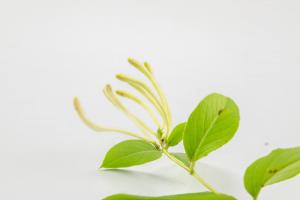Cutting of rose
1. Flower mud cutting method:
① Cut the robust rose branches at an angle of 45 ° for 10 ~ 15cm, with at least 2 nodes, keep 2 ~ 3 leaves, and cut off the rest

② Prepare flower mud, which is the bottom material usually used for flower arrangement, or sponge. Cut it into small cuboids of 3 ~ 5cm and soak it in water
③ Insert the pruned rose branches into the flower mud
④ After cutting, put all cuttings in a large basin and stand upright. Add 2 ~ 3cm water into the basin to keep sufficient water

⑤ Cover the basin with a transparent cover or plastic film and place it in a ventilated place with scattered light
⑥ In about 2 weeks, the rose will take root. At that time, you can carefully disassemble the flower mud to protect the root system. You can also keep the flower mud or sponge and put it in the basin together
⑦ After transplanting, the roses will bloom and burst again

2. Water bottle cutting method:
① Prepare cutting rose branches, at least two nodes, and cut off excess leaves to avoid wasting nutrition
② Prepare clean and transparent plastic bottles
③ Put the cutting branches and leaves upward into the plastic bottle, add some water at the bottom, and then screw on the bottle cap and put them in the place where there is scattered light at home

④ Change the water every day, and it will basically take root in 2 weeks
⑤ After rooting, the cuttings can be transplanted into a basin
Cutting of blue snowflake
1. Sandwich cutting method:
① Prepare the branches of blue snowflake (with at least one pair of leaves), seedling incubator (with suction holes at the bottom), peat soil, vermiculite and No. 5 battery

② Put the battery in the center of the seedling box, add peat soil around it, and take out the battery after compaction, which will form a hollow space
③ Fill the formed hole with vermiculite
④ Insert the branches of blue snow into the part with vermiculite in the middle and pour it through

⑤ Fill the seedling box in turn, and then put it into another large basin. Add water in the large basin. The surface of the water shall not exceed half the height of the seedling box
⑥ Cover it with a transparent cover or wrap it with plastic film and put it in a place that is not in direct sunlight and ventilated, which can accelerate rooting
⑦ Blue snow can take root in less than a week. This method avoids the disadvantage that the direct use of nutrients is easy to black rot. when transplanting the pot, you can directly move the pot with soil, which is very convenient

2. Perlite cutting method:
① Prepare several disposable plastic cups and blue snow branches for cutting
② Prepare an appropriate amount of perlite and use perlite completely without other media
③ Put the perlite into the plastic cup about half full, then insert the cutting branches into the perlite and water the cup. The water is just better than perlite

④ Cover with plastic film after inserting, keep warm and moisturize, and accelerate rooting
⑤ This method also takes root quickly, but when the temperature is high, it should be placed in a slightly cool place, otherwise it is easy to rot
⑥ After rooting, it can be transplanted into the pot. The new soil can be prepared with rotten leaf soil and perlite 2:1, and perlite can be reused

Cutting of Catharanthus roseus
1. Fish tank bottom sand cutting method:
(1) choose a relatively fine fish tank bottom sand, put it in a foam incubator or a larger container, wash it with carbendazim or water for several times, sterilize. p>
② Pour the diluted potassium permanganate solution into the box. The dilution degree is light purple in the soil. The potassium permanganate solution has just passed the bottom sand of the fish tank
③ Cut off 8 ~ 10cm strong branches of Catharanthus roseus and keep 2 ~ 3 leaves, whether there are flowers or not

④ Insert the cuttings into the bottom sand of the fish tank, and pay attention to the gap between the branches. Then put the incubator where there is scattered light
⑤ After two weeks, Catharanthus roseus can take root, and the survival rate of this method is very high
⑥ After rooting, the seedlings of Catharanthus roseus can be transplanted into pots

2. Nanny cutting method:
① Choose a pot of healthy flowers as the "nanny flower". Here we choose the original pot of Changchun flower
② Prepare the Changchun Branch to be cutted, and determine the number of cuttings according to the size of the nanny flowerpot
③ Insert the branches of Catharanthus roseus into the flower pot of "nanny flower", and pay attention to the place with large gap, otherwise it will not be easy to separate when you grow up

④ The advantage of this method is that cutting branches can be directly cultivated with the help of normal flower growth conditions, which is not too troublesome, very convenient and has a high survival rate
Cuttage of jasmine
1. Soil culture cutting:
① Choose a robust Jasmine branch, cut it off by 5 ~ 10cm, and keep a pair of leaves on it. The leaves can be cut off by 1 / 2 or 2 / 3, which can reduce the evaporation of water
② Prepare a container for soil culture, just an ordinary plastic bottle. Cut off 1 / 3 of the head, and then drill several holes in the flat bottom to drain and breathe

③ The culture medium is pure vermiculite, the survival rate is 100%, and the rooting is very fast
④ Add vermiculite into the plastic bottle, then insert the jasmine cuttings, pour water through, and put them in a place where the sun is not direct and ventilated
⑤ In a week or so, Jasmine can take root, so fast that you can't believe it

2. Hydroponic cutting:
① The transparent bottle can be selected for hydroponic culture. The transparent bottle is conducive to our observation of rooting
② Put the jasmine branch into the bottle and add water just below the root. Pay attention to adding water at any time and don't cut off the water. Generally, it can take root after 2 weeks
③ After taking root, transplant the jasmine branches into a pot. At the flowering stage, there will be another pot of fragrant jasmine

Cutting of Petunia
① Pick some strong Petunia branches with 2 ~ 3 nodes on them, and the length is guaranteed to be 5 ~ 8cm
② The cutting medium is peat soil, which is put into the culture container and compacted
③ Insert a hole with scissors or chopsticks to plant Petunia branches into the soil without damaging the branches

④ Cut the cuttings in turn, and then compact the surrounding soil to ensure that the branches are not tilted
⑤ After watering, cover the container with a layer of preservative film and put it in a place with scattered light and ventilation. Do not uncover the preservative film from time to time to observe the situation, so it is easy to fail cutting
⑥ After two weeks, Petunia will basically take root

⑦ In order to thrive later, the seedlings should be moved to large flowerpots for maintenance. Petunia is very easy to raise. It explodes in a month
Stop buying flowers
With so many cutting methods, there is always one suitable for you
Let's try it~
There will be unexpected surprises

 how many times do yo...
how many times do yo... how many planted tre...
how many planted tre... how many pine trees ...
how many pine trees ... how many pecan trees...
how many pecan trees... how many plants comp...
how many plants comp... how many plants can ...
how many plants can ... how many plants and ...
how many plants and ... how many pepper plan...
how many pepper plan...






























